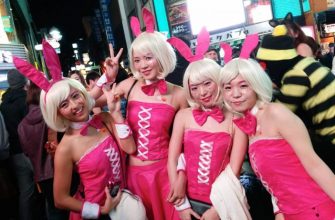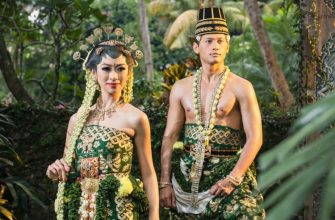Photo 1
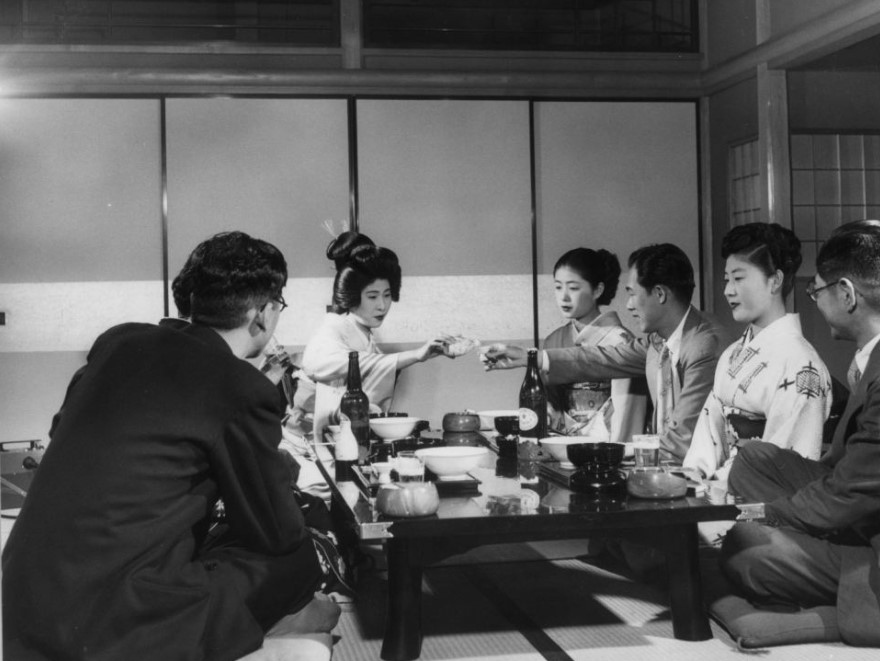
Entertaining men, Japanese geishas always made sure their cups were constantly full.
Photo 2
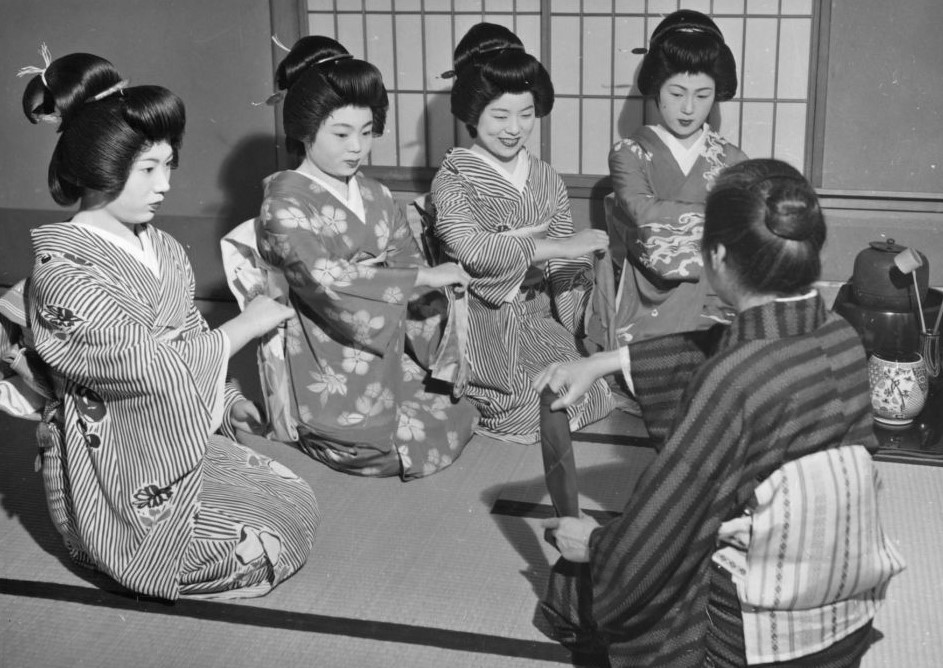
Young girls in kimonos with their hair neatly tied into tight, wide bundles, practicing their craft under the guidance of a senior geisha.
Photo 3
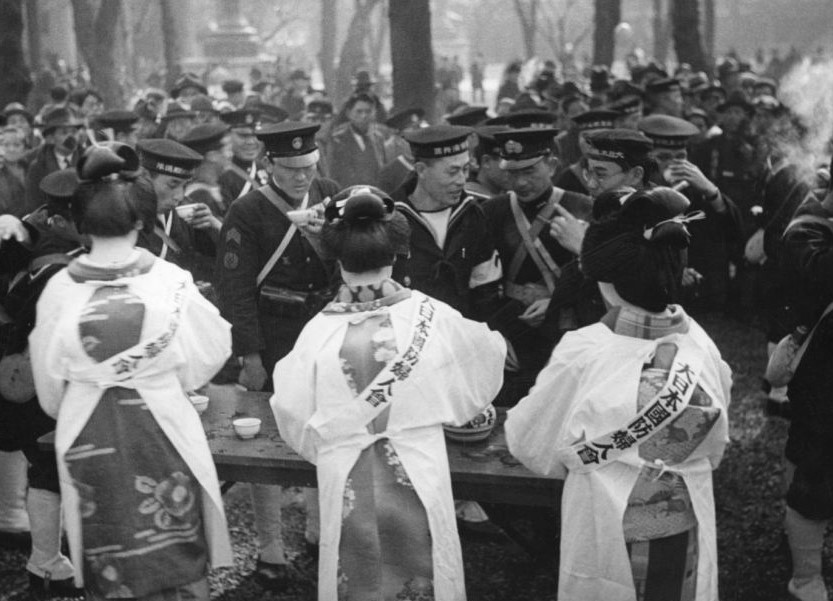
Geisha girls in aprons over their kimonos serving Japanese sailors on Navy Day in Tokyo, 1937.
Photo 4
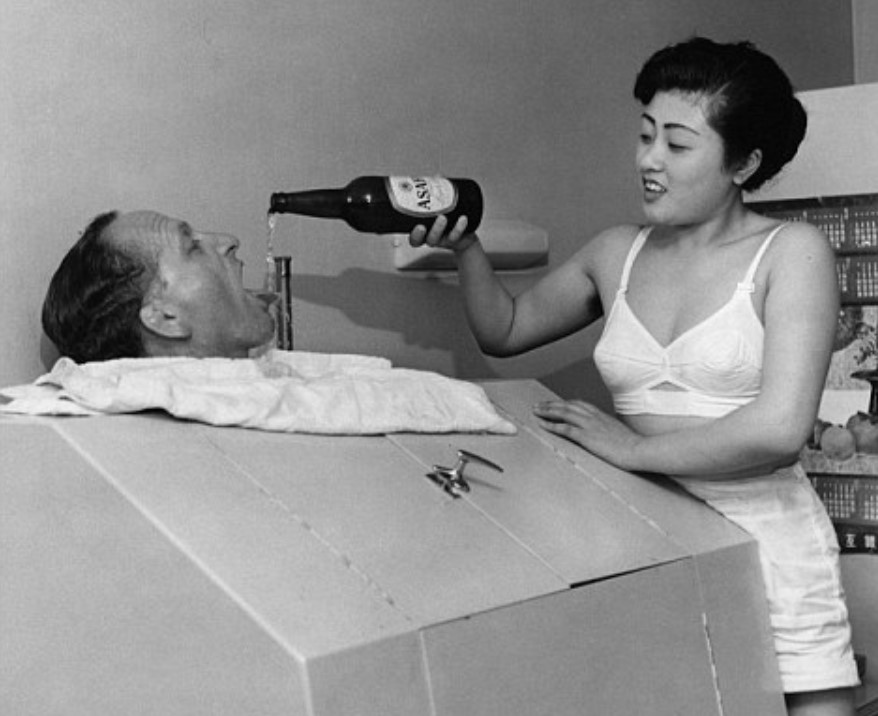
The geisha house mistress pours beer into the mouth of a male guest as he relaxes in a steam bath.
Photo 5

Two geisha girls in the 1950s, one playing the samisen, a traditional Japanese stringed instrument, and the other learning the intricacies of the geisha arts.
Photo 6
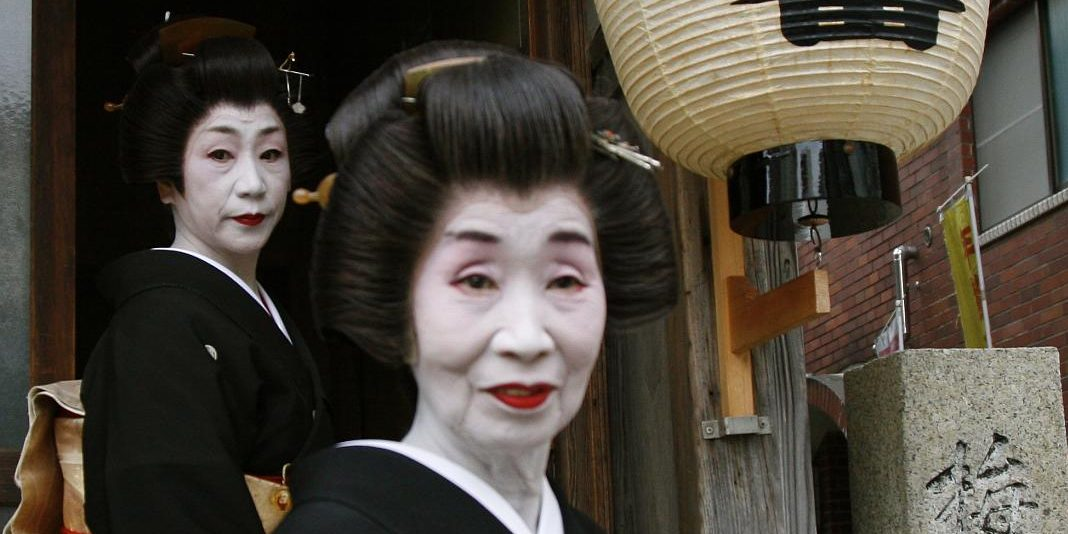
Many geisha continued to work into old age. Moreover, mature women in the role of geisha were highly valued by the Japanese: it was believed that a woman’s beauty fully blossoms with age.
Photo 7
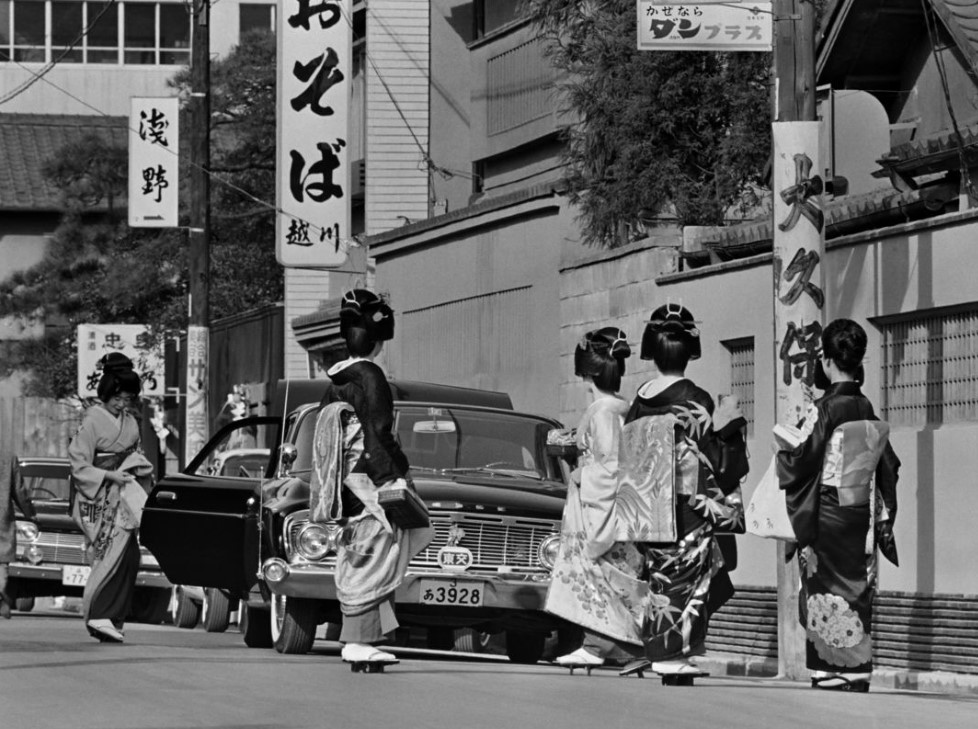
At least until 1960, not only in major cities but also in the provinces, except for very rural areas, restaurants that hosted banquets by reservation were not just places to eat well. They were necessary for ceremonies and social gatherings, and it was widely known that geisha were hired as assistants to help organizers.
Photo 8
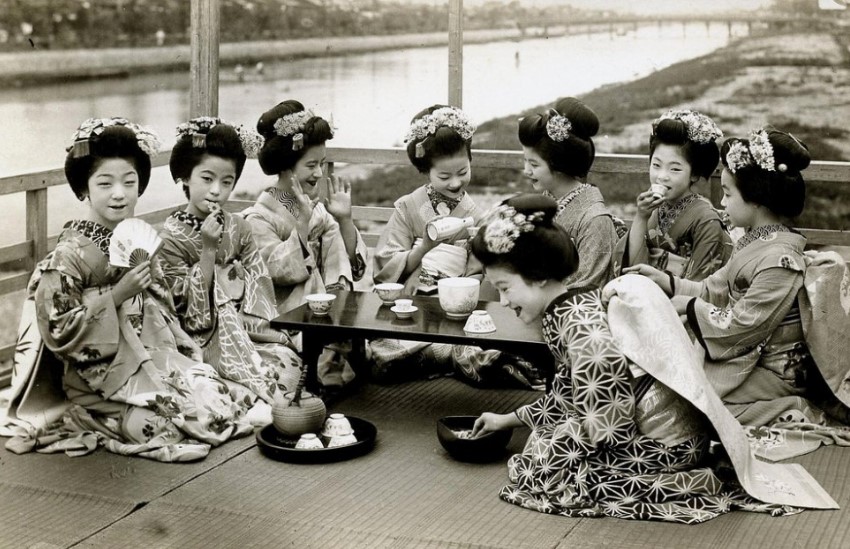
“Maiko” (which means “dancing child” in Japanese) is the term used for geisha apprentices. Before the child labor law was enacted, maiko would begin their training at the age of 9-12 years. After completing their education on how to receive guests, the maiko would then start their careers as geisha.
Photo 9

Geisha have a professional motto: “Every day, decide how old you want to be!” They conceal their true age behind traditional makeup – a white neck and face with painted-on, canvas-like black eyebrows and eyes, and vivid red lips.
Photo 10
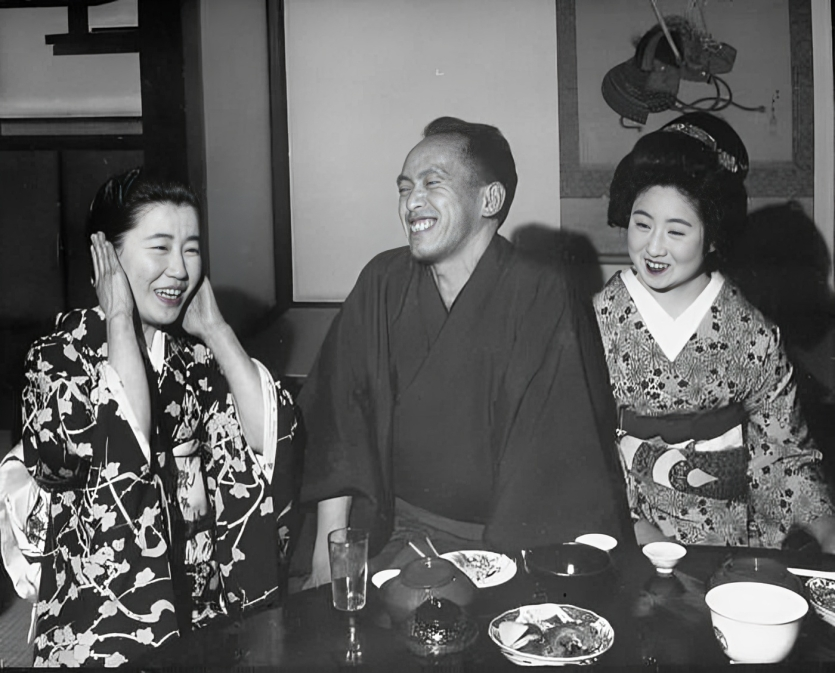
Being a geisha is not a life sentence. If she wishes, she can get married and have children, but in that case, her professional geisha career comes to an end.
Photo 11
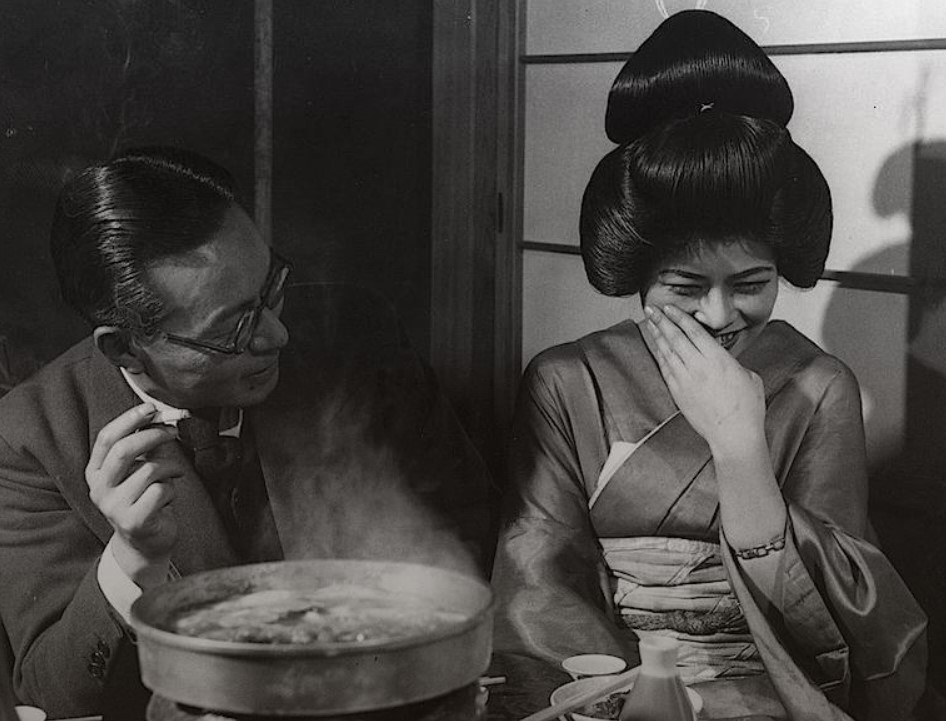
Geishas were artists and trendsetters in fashion; they had to be able to captivate guests, pique their interest, and help them relax after a long day.
Photo 12

Poor Japanese families often sold their daughters to geisha houses. Initially, the girls worked as maids, but then they would attend school and receive education.
Photo 13

Geisha had the most beautiful attire: they meticulously wore kimonos and adorned themselves with expensive jewelry. In the photo – a collection of footwear.
Photo 14

The most important thing for a prospective geisha is humility. She must be willing to do any task, at any time of day, and express gratitude to her “mentor” for it.
Photo 15

Geishas and maids stand at the entrance to the rural okiya. In such attire, the girls typically perform household or garden work.
Photo 16
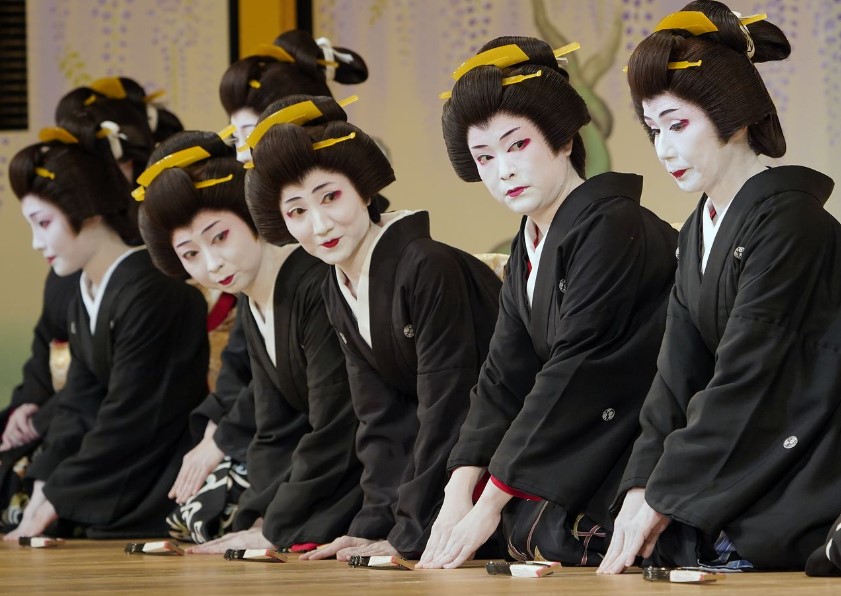
The formal attire of geisha includes a black kimono called “kosode” with short sleeves and crests, a white collar, and a “simada-mage” hairstyle. There is a rehearsal the day before the performance at the “Simbasi-embudjo” theater, created to showcase the accomplishments of geisha in the arts.
Photo 17

For the girls in geisha schools, there was no point in learning mediocre or poorly. These young women came to become paragons, to learn how to inspire with the grace of their verse, the elegance of their dance, and the artistry of their ikebana.
Photo 18

Geisha took very elegant care of men, even feeding them with chopsticks.
Photo 19

Geishas were well-educated – they were expected to engage in conversation on almost any topic. In addition to pleasing the ear with musical instruments and performing the tea ceremony, having eloquent speech, intelligence, and a sense of humor were crucial components.
Photo 20
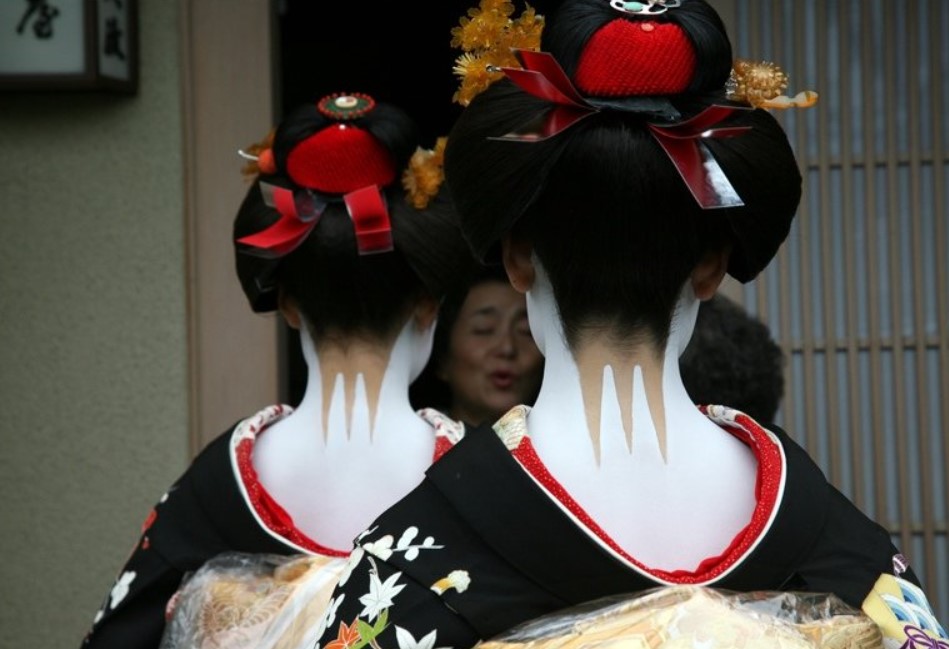
Geishas would have their hairstyles done at best once a week, as it was quite expensive. To protect their elaborate hairstyles, they would sleep on a firm roll called a “takamakura.”
Photo 21
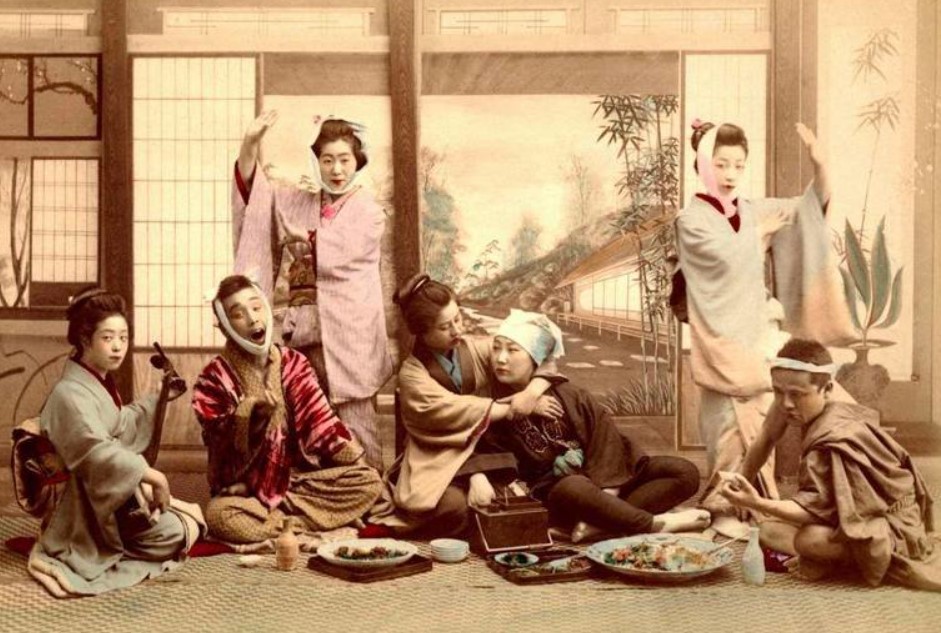
Geishas were not allowed to eat or drink in the presence of a client. Interestingly, a geisha’s clients would often be found by her “older sister,” an assistant who would visit teahouses in search of customers and assist the geisha with her kimono.
Photo 22
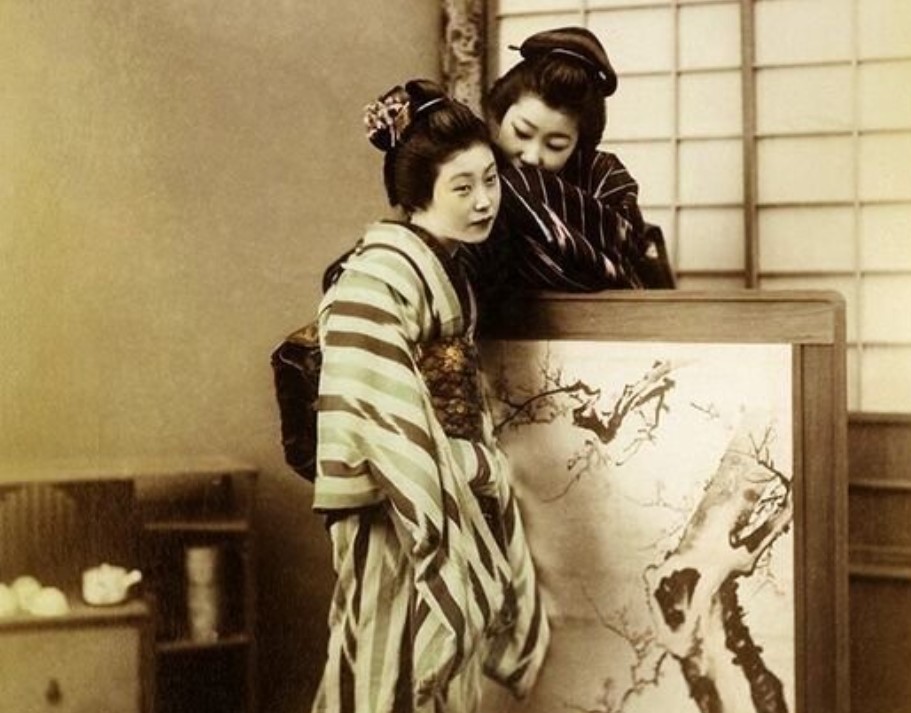
Many geishas had their own “danna,” a wealthy patron, and often remained exclusively with them.
Photo 23
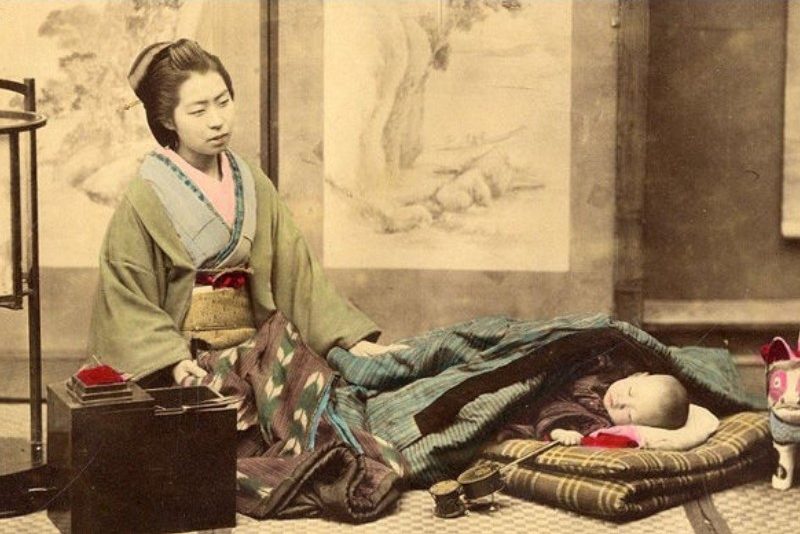
Some geishas even bore children with their danna, and he provided them with a comfortable existence, but this was more of an exception than a rule.
Photo 24

Geishas had lowered collars on the back of their necks, and an exposed nape was considered very sensual.
Photo 25
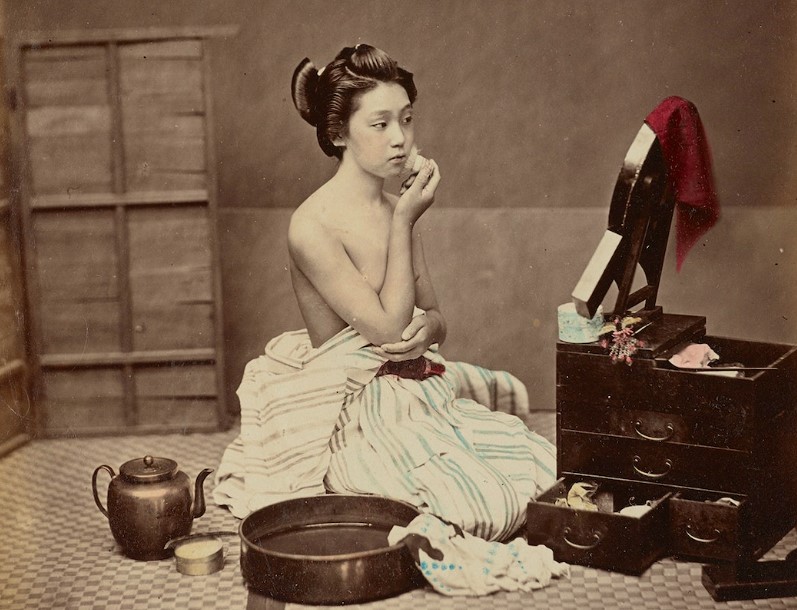
The girls applied makeup meticulously; looking perfect was crucial for geishas.
Photo 26
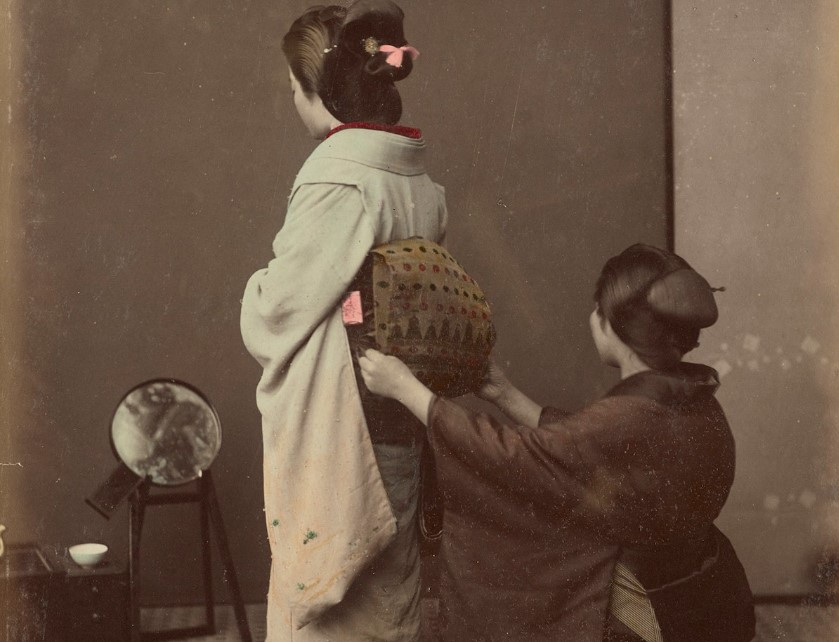
Tying the obi (sash) at the back by oneself was impossible, so each geisha had an assistant. Additionally, the way the obi was tied could distinguish a geisha from a prostitute. Prostitutes tied the obi at the front, while geishas tied it at the back.
Photo 27
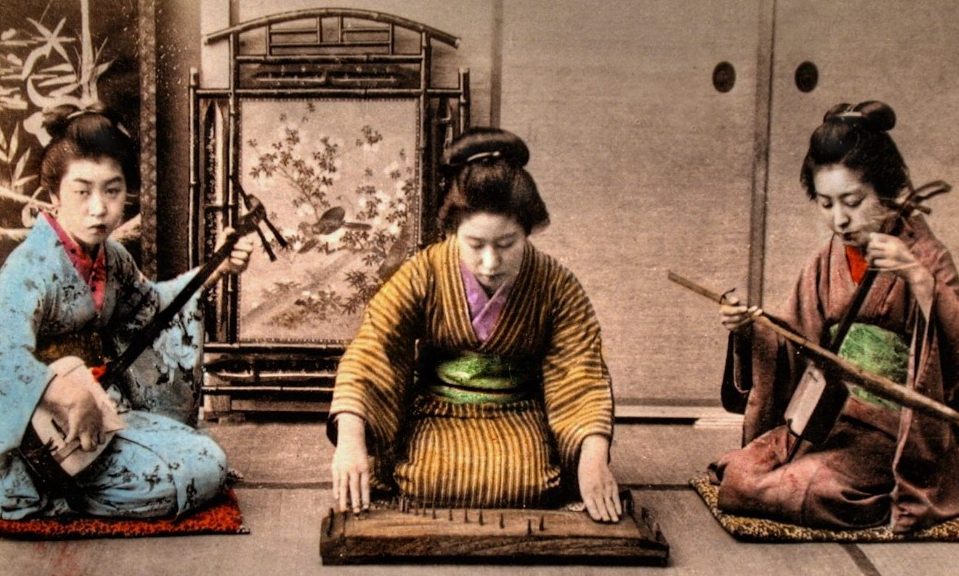
Geisha musicians playing sankyoku music on samisen, yokine, and kokyu. Geisha entertained guests at banquets hosted by noblemen, serving as musicians, dancers, and comedians, pouring drinks, and engaging in social conversation.
Photo 28
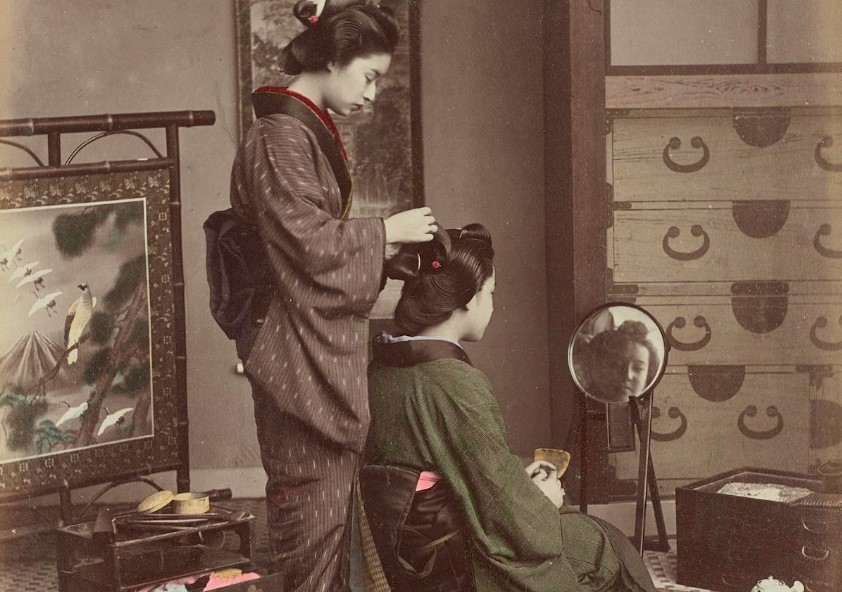
Hair styling took a lot of time, and over time, geishas could develop bald spots from tight hairstyles, which they had to conceal.
Photo 29
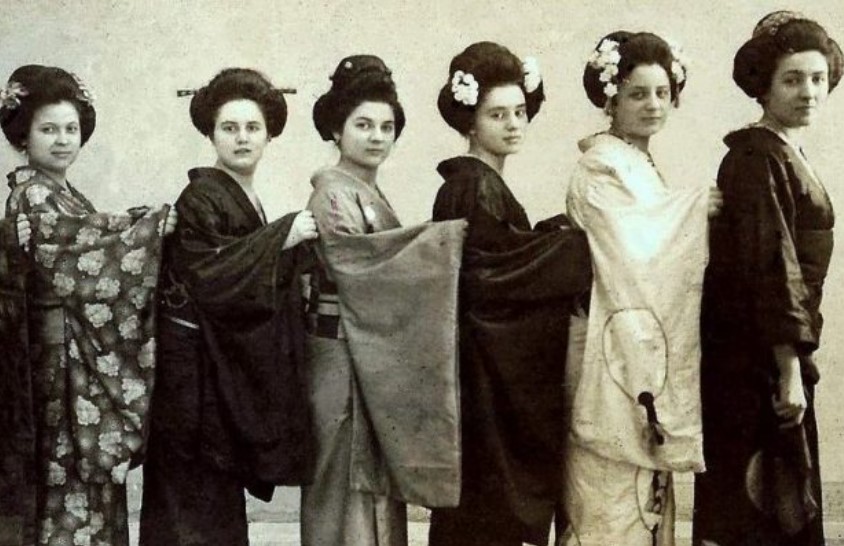
It is commonly believed that all geishas are Japanese, and it was indeed the case. However, starting from the 1970s, there have been geishas from other countries among their ranks. Naturally, they adopted Japanese stage names, as is customary in this profession. Among geishas, there have been individuals from the United States, China, Romania, Ukraine, Peru, and Australia, to name a few. They underwent training in specialized okiya houses and therefore had the full right to be called geishas.
Photo 30
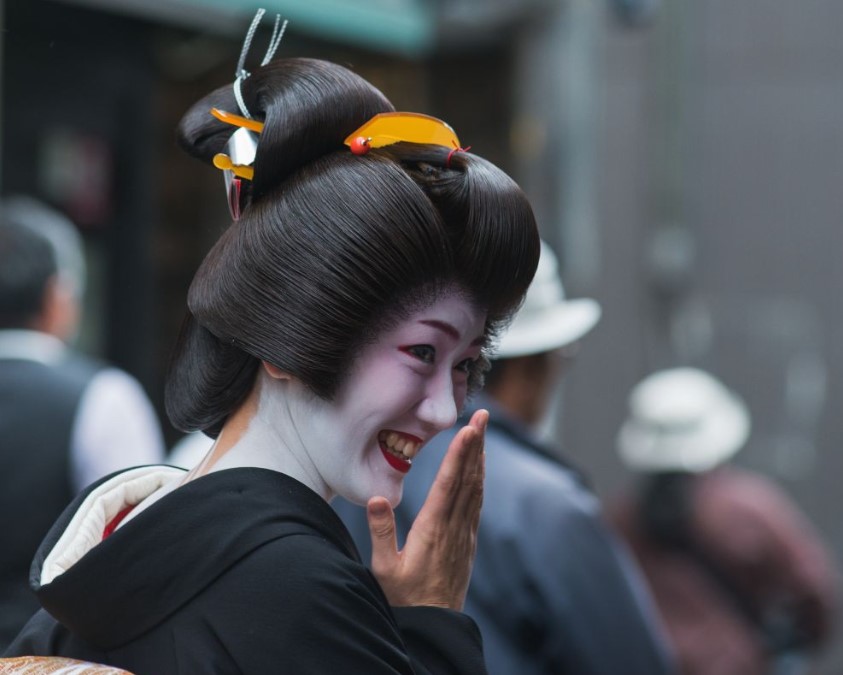
If you think that geisha are a thing of the past, you are mistaken: they still exist in Japan today! They host tea ceremonies, serve in traditional Japanese restaurants, and work as musicians, comedians, and tamadas.
However, real geisha today are rare, and their numbers are declining. So, if you find yourself in Japan, you are more likely to take selfies with a costumed entertainer who has no knowledge of the ancient Eastern art.




